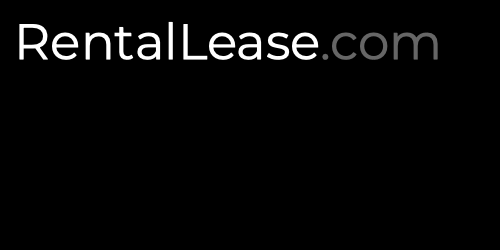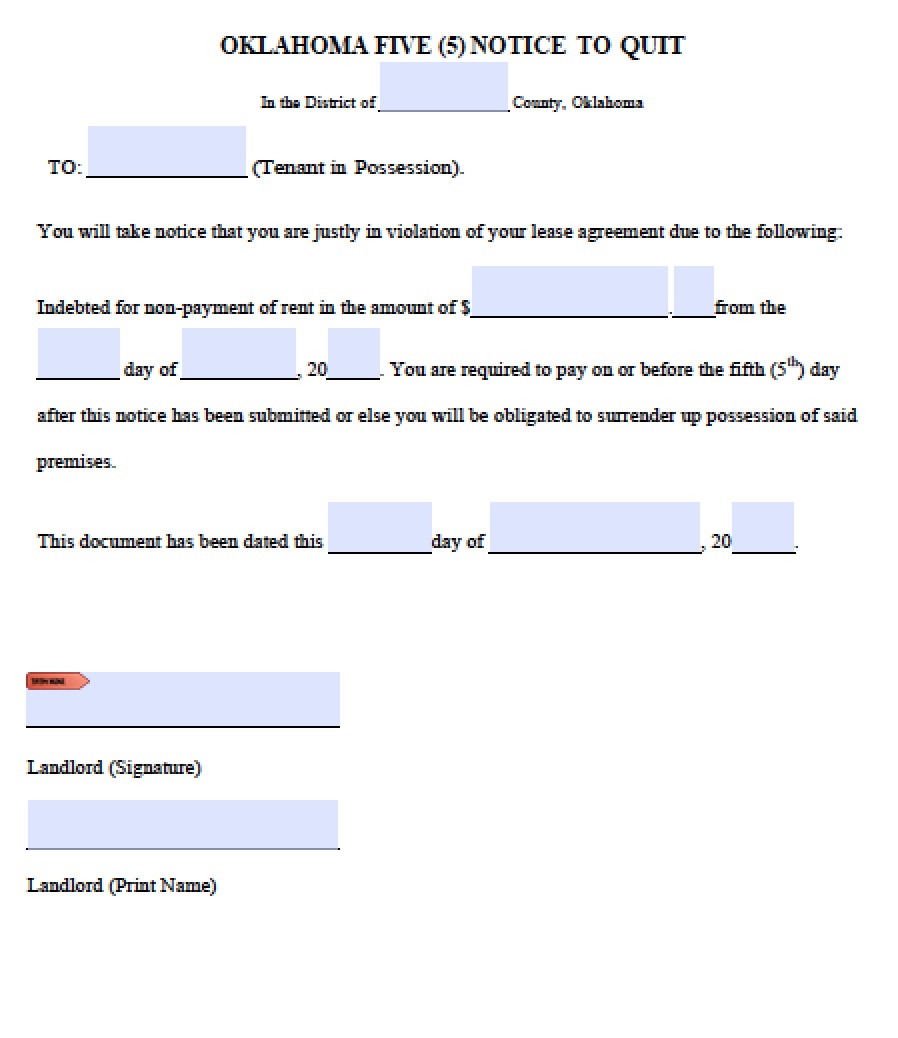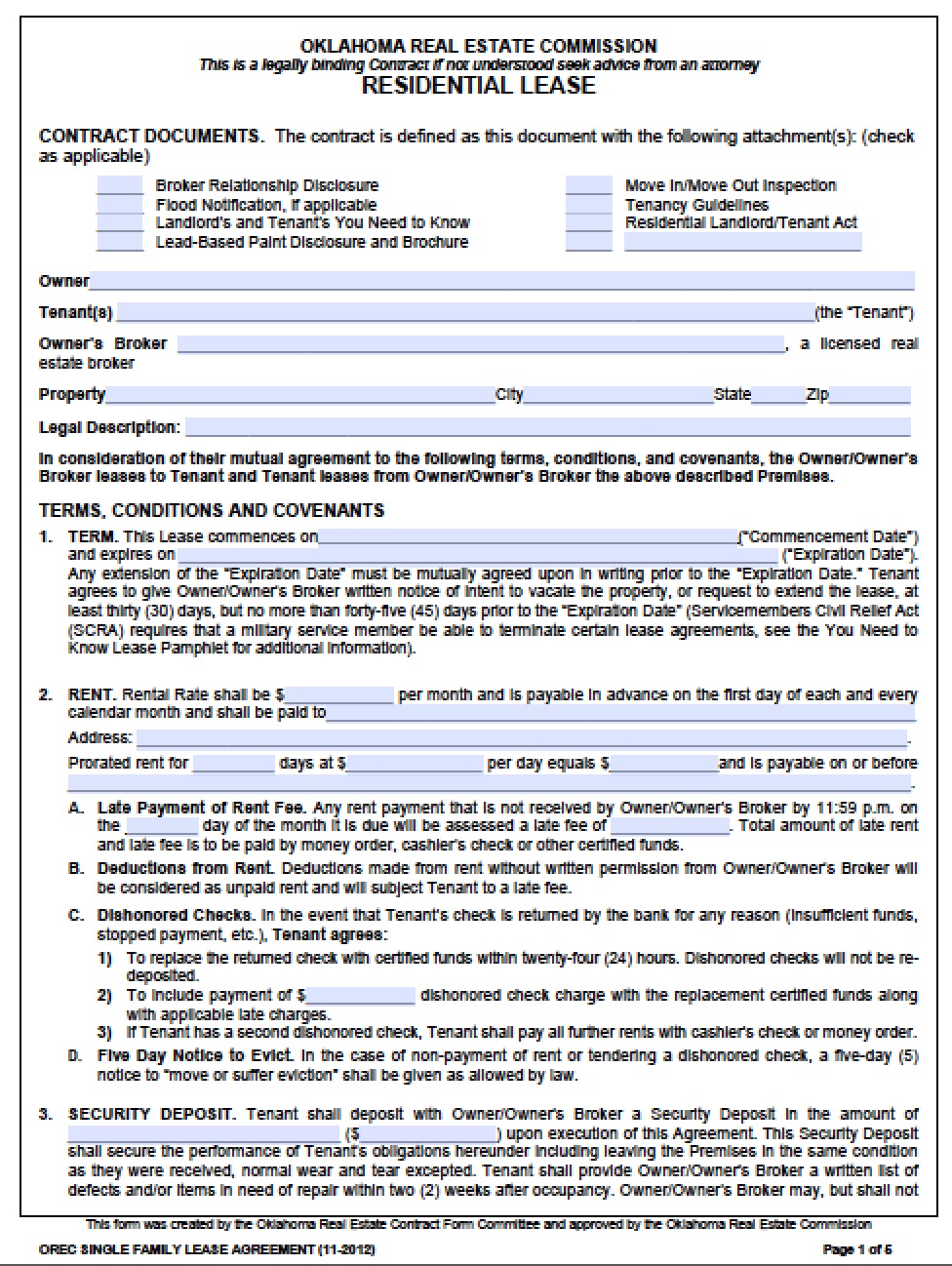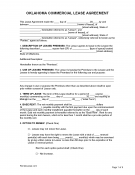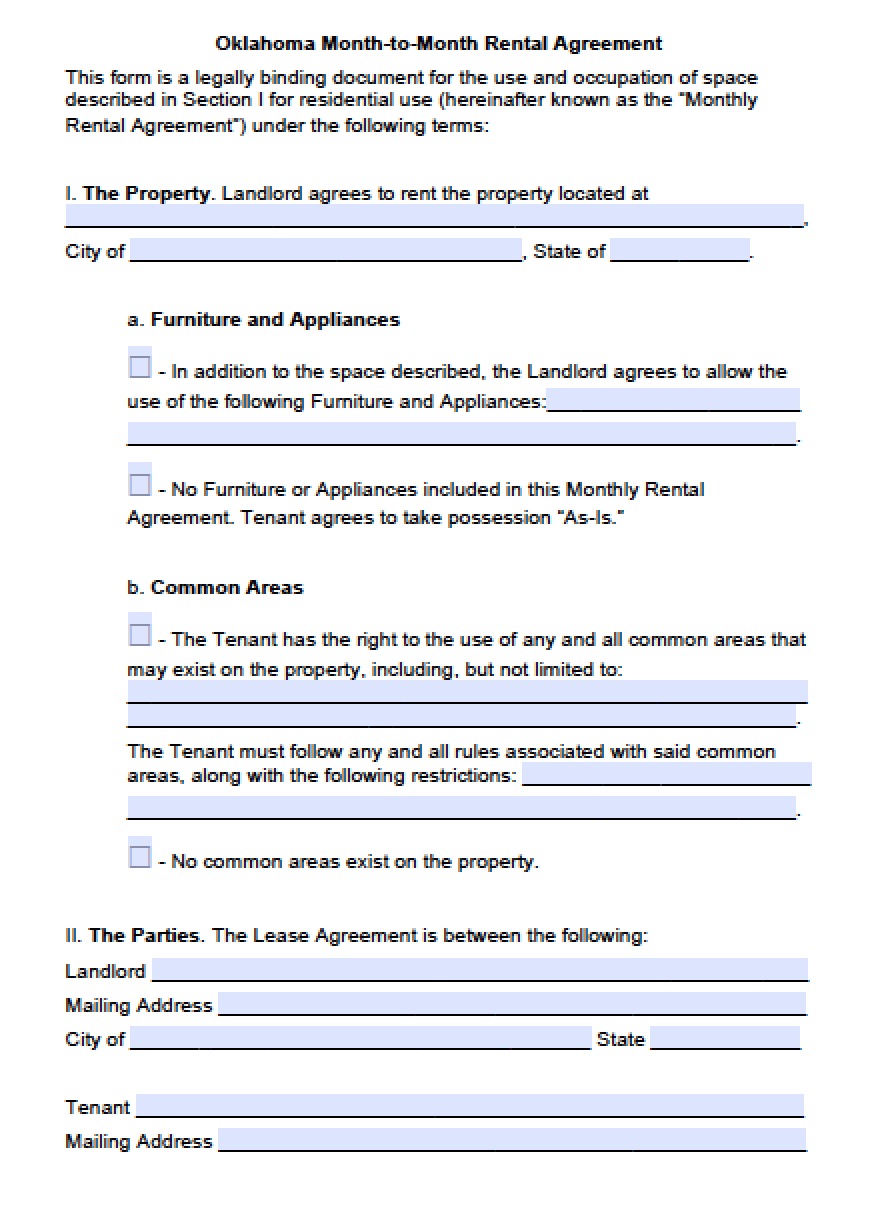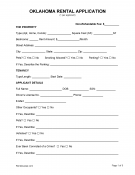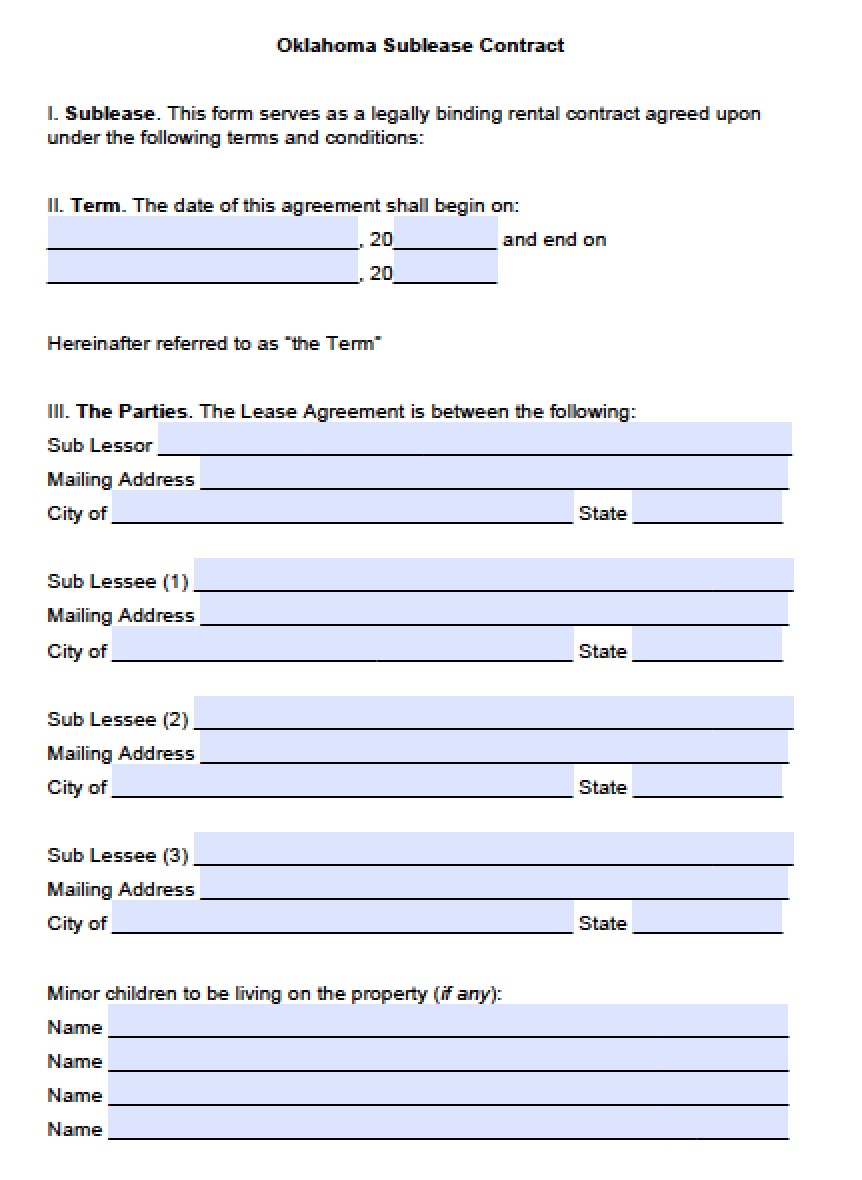The Oklahoma rental lease agreements are contracts between a landlord of residential or commercial property and a tenant seeking to either reside in the space or use it for business purposes. The forms must be created and signed in accordance with all State laws (Residential Landlord and Tenant Act). Additionally, the forms must include all necessary disclosures to inform the tenant of any potential hazards or liabilities on the premises. Following negotiations and the signing of the contract, the document is considered fully enforceable and the tenant shall be granted access upon the lease start date.
Oklahoma Rental Lease Agreement Templates | PDF
Oklahoma Lease Agreements
The Oklahoma five (5) day notice to quit for the nonpayment of rent is a letter that may be served upon a tenant by a landlord when payment has not been made on the due date stated in the lease agreement. According to § 41-141, the notice may offer the tenant the option of either paying the amount due to continue residing on the premises or vacating the property altogether. Regardless of which option is chosen, the tenant will have…
The Oklahoma standard one (1) year residential lease agreement creates a legal contract between a landlord and tenant for the use of residential living space. The agreement establishes lease terms relating to the monthly rent payment, security deposit (if any), smoking/pet policies, utilities, and eviction notices. While not required, it is highly recommended that the lessor review the tenant’s credentials with the rental application to ensure their financial security. Once the agreement has been signed by all parties, it becomes effective until…
An Oklahoma commercial lease is a document that binds an individual or entity into an arrangement for the use of space that may be used for a business-related purpose. The tenant will be required to pay rent in addition to whatever other expenses have been outlined in the rental agreement. Due to the financial investment made by the landlord (i.e., fitting the property to meet the tenant’s needs), the term will typically be between two (2) to five (5) years…
The Oklahoma month-to-month lease agreement is a unique real estate contract that permits a lessee to rent space from a property owner/manager for one (1) month at a time. As long as neither the landlord nor tenant choose to terminate the contract, and the tenant continues to pay on the due date stated in the agreement, the contract will remain valid. The landlord should understand that they will be exposed to the same eviction laws as a standard one (1)…
The Oklahoma rental application may be used by a property manager/owner to review a potential lessee’s credit background and references (e.g., previous lessors, current and previous employers). The landlord is allowed to charge whatever amount desired to conduct the credit check regardless of whether or not the applicant is approved. According to § 41-115, the landlord may also request a security deposit, although the deposit should only be made after the applicant has been approved.
The Oklahoma sublease agreement is a contract meant for use by individuals who are currently in a binding residential lease and would like to rent the entire space, or a portion thereof, to someone else. The individual seeking to rent out their space (the sublessor) will be fully responsible for whoever agrees to sublet. Therefore, all potential sublessees should be screened via the rental application to ensure that they can be trusted to maintain the condition of the property and…
STATE DISCLOSURES
Flooding (§ 41-113A) – If the premises has been flooded in the last five (5) years, the landlord must inform the tenant using this disclosure.
Lead-Based Paint – Federal law requires all housing units built before 1978 to be identified as potentially containing lead paint. Therefore, the tenant must receive this disclosure to inform them of such information.
Notice (§ 41-116) – Included in the rental contract must be the names and addresses of both the individual entitled to accept official notices and the individual(s) permitted to manage the premises.
SECURITY DEPOSITS
Maximum – There is no State statute which dictates a limit on how much a landlord may charge as a security deposit.
Returning (§ 41-115) – The landlord must give back all funds associated with the deposit, along with any itemized deductions for damages, within thirty (30) days of the tenant moving out of the property.
LANDLORD'S ACCESS/ENTRY
The landlord must provide at least one (1) day's notice before entering the premises for any non-emergency event (§ 41-128).
